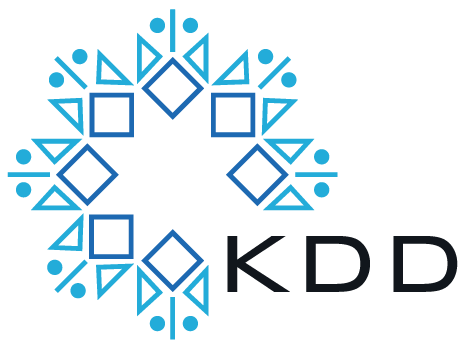
SIGKDD(KDD) 1998 论文列表Proceedings of the Fourth International Conference on Knowledge Discovery and Data Mining (KDD-98), New York City, New York, USA, August 27-31, 1998. |
Knowledge Discovery and the Interface of Computing and Statistics.
PlanMine: Sequence Mining for Plan Failures.
Daily Prediction of Major Stock Indices from Textual WWW Data.
Learning to Predict Rare Events in Event Sequences.
Discovering Technical Traders in the T-bond Futures Market.
Data Reduction Based on Hyper Relations.
Mining Generalized Association Rules and Sequential Patterns Using SQL Queries.
Simultaneous Reliability Evaluation of Generality and Accuracy for Rule Discovery in Databases.
Defining diff as a Data Mining Primitive.
A Robust System Architecture for Mining Semi-Structured Data.
Ranking - Methods for Flexible Evaluation and Efficient Comparison of Classification Performance.
Time Series Forecasting from High-Dimensional Data with Multiple Adaptive Layers.
Mining Databases with Different Schemas: Integrating Incompatible Classifiers.
Methods for Linking and Mining Massive Heterogeneous Databases.
Memory Placement Techniques for Parallel Association Mining.
Analysing Rock Samples for the Mars Lander.
Large Datasets Lead to Overly Complex Models: An Explanation and a Solution.
Towards the Personalization of Algorithms Evaluation in Data Mining.
Group Bitmap Index: A Structure for Association Rules Retrieval.
Reinforcement Learning for Trading Systems and Portfolios.
Discovering Predictive Association Rules.
Aggregation of Imprecise and Uncertain Information for Knowledge Discovery in Databases.
Human Performance on Clustering Web Pages: A Preliminary Study.
Approaches to Online Learning and Concept Drift for User Identification in Computer Security.
BAYDA: Software for Bayesian Classification and Feature Selection.
Targeting Business Users with Decision Table Classifiers.
Active Templates: Comprehensive Support for the Knowledge Discovery Process.
An Enhanced Representation of Time Series Which Allows Fast and Accurate Classification, Clustering and Relevance Feedback.
Defining the Goals to Optimise Data Mining Performance.
Comparing Massive High-Dimensional Data Sets.
Fast Computation of 2-Dimensional Depth Contours.
Learning to Predict the Duration of an Automobile Trip.
Mining Segment-Wise Periodic Patterns in Time-Related Databases.
Coactive Learning for Distributed Data Mining.
On the Efficient Gathering of Sufficient Statistics for Classification from Large SQL Databases.
Mining in the Presence of Selectivity Bias and its Application to Reject Inference.
Initialization of Iterative Refinement Clustering Algorithms.
A Fast Computer Intrusion Detection Algorithm Based on Hypothesis Testing of Command Transition Probabilities.
FlexiMine - A Flexible Platform for KDD Research and Application Construction.
Carmel Domshlak D. Gershkovich Ehud Gudes N. Liusternik Amnon Meisels Tzachi Rosen Solomon Eyal Shimony
Interactive Interpretation of Kohonen Maps Applied to Curves.
Giga-Mining.
Joins that Generalize: Text Classification Using WHIRL.
Toward Scalable Learning with Non-Uniform Class and Cost Distributions: A Case Study in Credit Card Fraud Detection.
Probabilistic Modeling for Information Retrieval with Unsupervised Training Data.
Blurring the Distinction between Command and Data in Scientific KDD.
Mining Association Rules in Hypertext Databases.
Direct Marketing Response Models Using Genetic Algorithms.
Independence Diagrams: A Technique for Visual Data Mining.
ADtrees for Fast Counting and for Fast Learning of Association Rules.
Online Generation of Profile Association Rules.
Interestingness-Based Interval Merger for Numeric Association Rules.
Coincidence Detection: A Fast Method for Discovering Higher-Order Correlations in Multidimensional Data.
A Data Mining Support Environment and its Application on Insurance Data.
Interpretable Boosted Naïve Bayes Classification.
A Belief-Driven Method for Discovering Unexpected Patterns.
Evaluating Usefulness for Dynamic Classification.
Integrating Classification and Association Rule Mining.
Data Mining for Direct Marketing: Problems and Solutions.
Mining Audit Data to Build Intrusion Detection Models.
An Efficient Approach to Clustering in Large Multimedia Databases with Noise.
Pattern Directed Mining of Sequence Data.
Algorithms for Characterization and Trend Detection in Spatial Databases.
Occam's Two Razors: The Sharp and the Blunt.
Finding Frequent Substructures in Chemical Compounds.
Similarity of Attributes by External Probes.
Rule Discovery from Time Series.
Scaling Clustering Algorithms to Large Databases.
CLOUDS: A Decision Tree Classifier for Large Datasets.

